|
Jul
08
2024
|
|
Posted 1 years 146 days ago ago by Admin
|
|
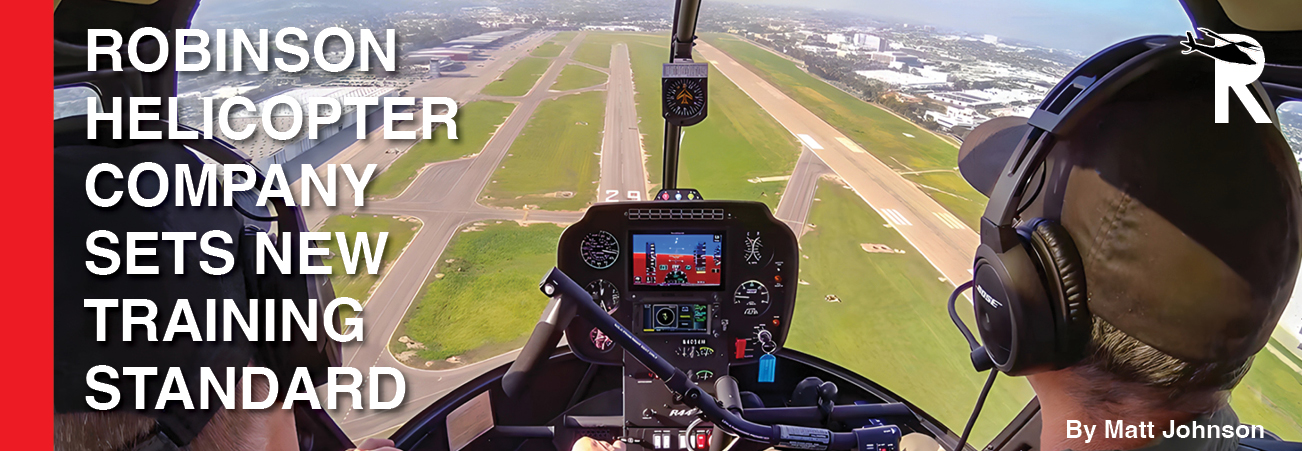
One might think there have been many sleepless nights in Torrance, California. Well, maybe there was some sleep here and there, but you wouldn't know it from the amount of hard work the Robinson Helicopter Company (RHC) put into their new Instructor Standardization Course. Their Safety and Flight Training department has embarked on a new venture that will surely garner a lot of interest, and more importantly—reduce accidents. It is a unique project that has been in the works for some time but recently became a reality under the leadership of new RHC CEO Dave Smith.
I had the opportunity to personally experience the course recently, and an experience it was. I was fortunate to attend only the second iteration of the course. The first class consisted of eight highly experienced CFIs and DPEs from across the United States and internationally. My second iteration class was just as impressive, with six CFIs and one DPE (myself). Overall, the group brought a fantastic amount of experience ranging from 3,000 to more than 20,000 hours, much of that in an instructional setting. Regardless of the experience level, it became immediately apparent that those in attendance were there for the right reasons: "I have over 22,000 hours as a pilot, and I feel I have a lot to offer and have started to give back by doing flight instruction – I'm here because I want to do things right" said Alex Leal of Laredo, Texas.
It should come as no surprise that the accident numbers surrounding helicopter flight training remain a constant area of concern for many in the industry. So many individuals and incredible organizations have worked tirelessly to undertake the proverbial Sisyphean task of reducing accidents in all aspects of our industry. RHC has strongly entered the game: "I’m an engineer at my core, so I like to find problems and fix them," said CEO Smith, who is only the third person to lead RHC in its nearly 50-year history. The transition came in February as Kurt Robinson handed over the reins.
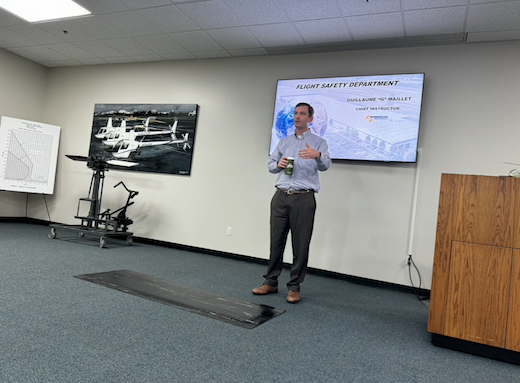
Robinson Helicopter Company CEO Dave Smith addressed participants on Day 1
This new program has not replaced RHC’s familiar safety course that boasts an impressive attendance over the decades of 30,000. The new program features an entirely different level, one explicitly designed for instructor pilots to reduce accidents. "Studying accident trends to improve safety is at the forefront of what we do here at Robinson, and we are taking that knowledge and incorporating that information into this new program," said Bob Muse, safety director at RHC. The new course will include a full five days of instruction and four to five hours of flying. Something I quickly learned in the introduction of the course is that it isn't an "everyone gets a trophy” program: the course is pass or fail. To complete the course, participants must not only demonstrate the required flight skills themselves but must also demonstrate the ability to teach those skills in an instructor-student setting to RHC’s standard. The program's overarching goal is to provide standard instructions and answers to related questions. The certificate issued at the program completion isn't just for bragging rights; RHC intends to offer the list of successful Instructor-pilots to the industry and is working on different ways to make those successful course completers stand out in the industry to those seeking qualified instructor-pilots. My initial impression of this course reiterated a long-held personal belief that there is a vast difference between a flight instructor and the holder of a flight instructor certificate.
The course, headed up by Muse and RHC Chief Flight Instructor Guillaume Maillet, a 25-year CFI, and 18-year RHC instructor known to his colleagues and students as "G," has poured an incredible amount of work and research into the development of the course. This included running two course iterations with a select audience to help them determine exactly what the standards should be. "We have a passion for getting back to basics and pushing for precision flying," said Maillet. "We want to standardize training in our airframes and have an agreed upon level playing field.”
Day One
Having attended a few factory-created courses over the years, I soon learned this was like no other OEM-taught course in which I’d participated. The first day began with an intense review of some select training-related accidents. "We saw a pilot go down a familiar path in most of the accidents we investigated. We want to identify and show those red flags to those providing instruction in our airframe," said Muse. I wasn't alone in my initial assessment of their dedication to this; fellow DPE Ben Fouts, owner of Mauna Loa Helicopters, attended the first iteration and said, "The level of detail they provide on the accident reviews allows us to start at the scene and work our way back to see just how training deficiencies led to the event."
Day One continued with Maillet providing in-depth instruction on the Robinson rotor-head design and many other systems. His passion for teaching was evident in every detail he presented, and the custom graphics and material developed for the new course were second to none. Day One ended with an in-depth discussion on wire strikes and the importance of teaching the topic to students. This was followed by a full review of the day, seeking feedback from all attendees on what should be added to or removed from the curriculum. One of the impressive ideas of the course design is that each day is structured to end on a human-factors concept. I wasn't the only one with appreciation for the human-factors elements incorporated into the course. Neil Jones of Quantum Helicopters, a DPE of more than 25 years who has administered more than 3,500 practical tests, was one of the first eight people to participate in the first course. He said, "It was evident they put a lot into the course, our industry can be very hazardous if not done correctly and they are very sincere in trying to improve safety."
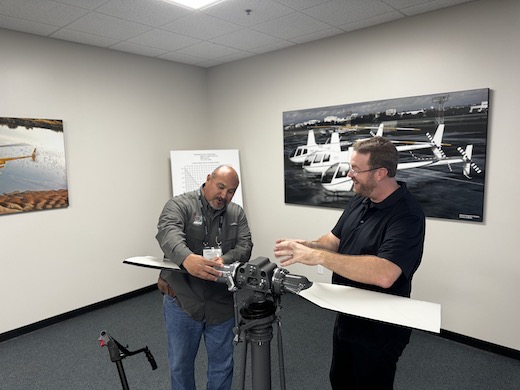
Alex Leal of Laredo, Texas with RHC Chief Instructor Guillaume "G" Maillet
Day Two
Day Two started with the same positive vibe that closed out the first day. Pilot knowledge and proficiency continued to be the core theme. We started with a list of environmental factors that affect the safety of flight and why those topics are important for instructors to know and adequately teach. Near and dear to me, the discussion of weather was covered, not any boring weather theory, but more on the importance of teaching the various available weather products available and the importance of "trigger points” to make personal minimums to adhere to consistently. This resonated with me because of the overall weakness I see as a DPE regarding weather from applicants of all certificate-seeking levels.
Days Three and Four
The third and fourth days were jam-packed with more valuable information and in-depth discussions on topics such as vortex rings and the mechanics and aerodynamics of autorotations, with a strong focus on energy management. An additional emphasis was placed on the over-teaching of autorotations, which in many cases has led to more disadvantages than merit. The instructor staff pointed out that emergency procedures for their products vary in number from 28 to 33 different procedures depending on the specific airframe. In their observations, only a very few of those emergency procedures are actually being taught as there is a misconception that "autos fix everything" and that simply isn't the case. Several accident cases were reviewed, showing instances of passengers being hurt and / or bent metal, all because the pilot had over-responded to a situation.
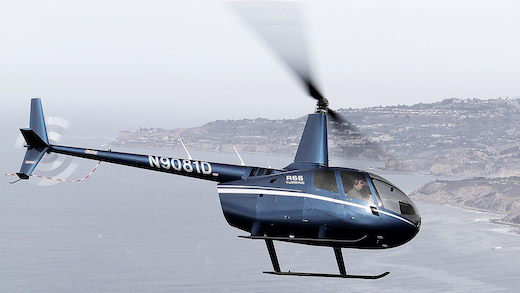
The flying portion of the course also started on Day Three, and it was no letdown. A strong emphasis on precision flying was the theme, with hover maneuvers being at the forefront of the first flight period. Next up was one of the most thorough in-flight discussions and demonstrations of responding to low rotor RPM that I have experienced. After each instructor's explanation and demonstration, the instructor pilots were required to explain and demonstrate the procedures in the same manner while emphasizing the importance of standardization. Remember: this is a pass or fail course.
Day Five
The final day included more classroom discussion on the loss of control (LOC) accidents related to training events and an intense briefing on the fundamentals of the SFAR 73 regulation, including its history followed by more flight sessions. The final flights consisted of autorotation instruction using a standardized approach, including enhanced autorotation techniques and responses to power failures at altitudes from various airspeeds and configurations.
Wrapping up the final day once again brought everyone together for a candid discussion on the course curriculum and a sincere plea from RHC’s training staff for our feedback on the course: what to add, delete or modify. This is one of the many areas where this program really shined. In just one week, I noticed that the sincerity of the RHC staff was mirrored by those in attendance; in a short amount of time, I felt a level of camaraderie with the other course participants as we all truly felt invested in how this program can improve safety. The RHC instructor pilots who flew with the course participants were also present and offered much insightful information. Simon Jones, a 21-year RHC Safety Course flight instructor said, "This program is only going to help flight schools of all sizes; it will reduce accidents."
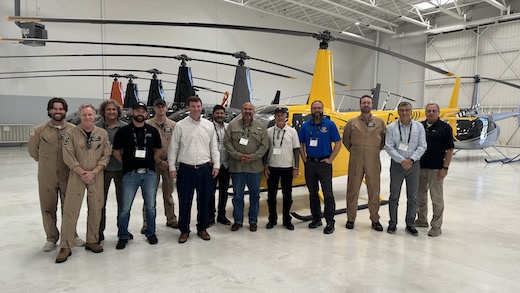
There was nothing superfluous about the program. The final product that will be crafted from a data-driven developed curriculum and feedback from participants of the first two iterations will yield a full five days of intense ground and flight instruction. As of this writing, three courses have been scheduled for the remainder of 2024, all of which are full. If you look at earning a flight instructor certificate as a "degree," this program is undoubtedly at the "masters” level you should set your sights on. For those wondering – I passed!
READ MORE ROTOR PRO: https://justhelicopters.com/Magazine
WATCH ROTOR PRO YOUTUBE CHANNEL: https://buff.ly/3Md0T3y
You can also find us on
Instagram - https://www.instagram.com/rotorpro1
Facebook - https://www.facebook.com/rotorpro1
Twitter - https://twitter.com/justhelicopters
LinkedIn - https://www.linkedin.com/company/rotorpro1